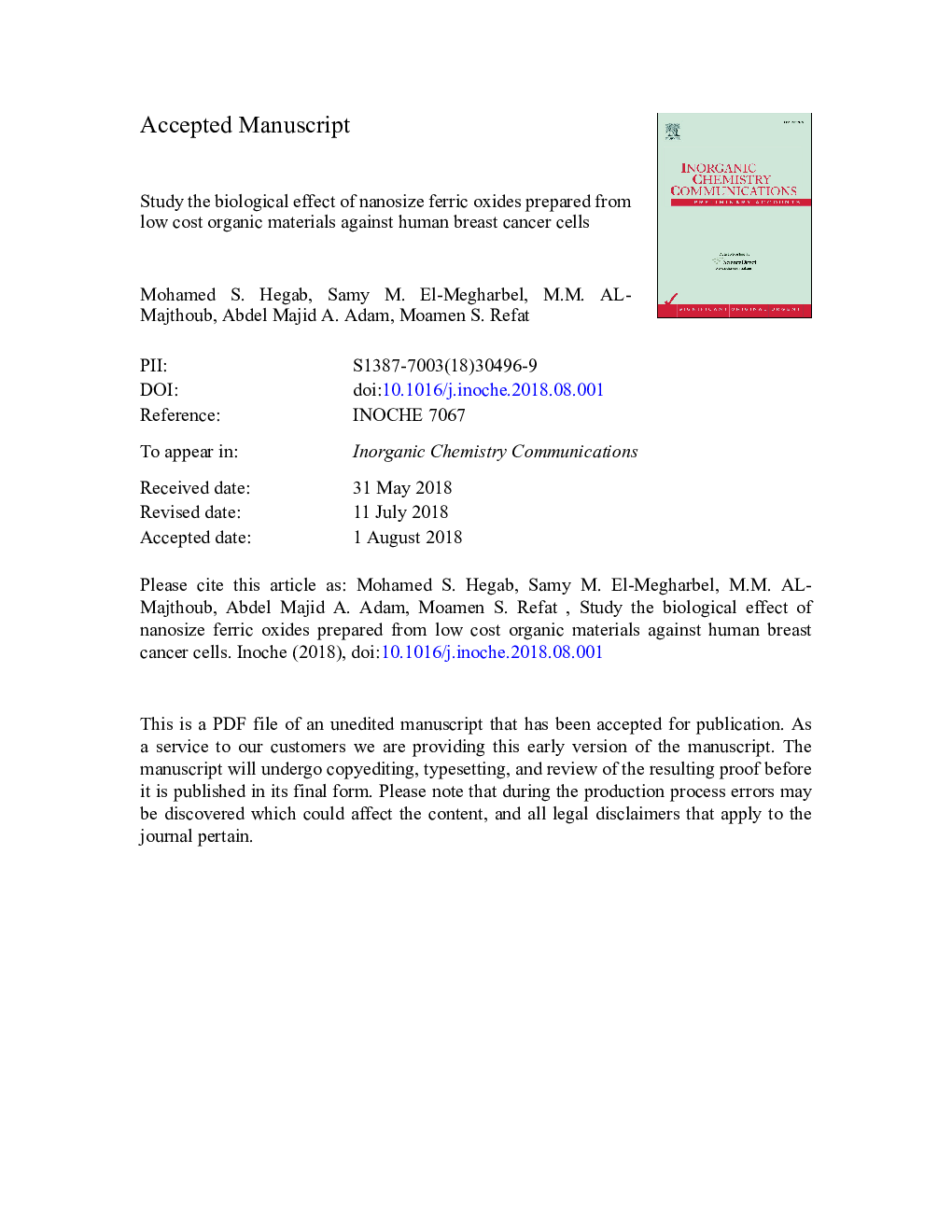| Article ID | Journal | Published Year | Pages | File Type |
|---|---|---|---|---|
| 7748262 | Inorganic Chemistry Communications | 2018 | 34 Pages |
Abstract
The aim of this paper is to fully exploit the medical potential of αâFe2O3 as a promising material for anticancer agent. Herein, Fe2O3 nanoparticles (NPs) have been synthesized using thermal decomposition method for the iron(III) Schiff base (N,Nâ²âdisalicylideneâl,2âphenylenediamine (H2dsp), N,Nâ²âdisalicylideneâ3,4âdiaminotoluene (H2dst), 4ânitroâN,Nâ²âdisalicylideneâ1,2âphenylenediamine (H2ndsp) and N,Nâ²âdisalicylidene ethylenediamine (H2salen)) complexes as precursors. The calcined of Fe2O3 NPs were comprehensively characterized based on UV-Vis, FT-IR, SEM, TEM and XRD. The band gap energy of the synthesized αâFe2O3 NPs particles are 1.75-1.92â¯eV range. Evaluation of cytotoxicity against human breast cancer cell line (MCF-7) for the synthesized αâFe2O3 hematite nanoparticles was performed.
Keywords
Related Topics
Physical Sciences and Engineering
Chemistry
Inorganic Chemistry
Authors
Mohamed S. Hegab, Samy M. El-Megharbel, M.M. AL-Majthoub, Abdel Majid A. Adam, Moamen S. Refat,
